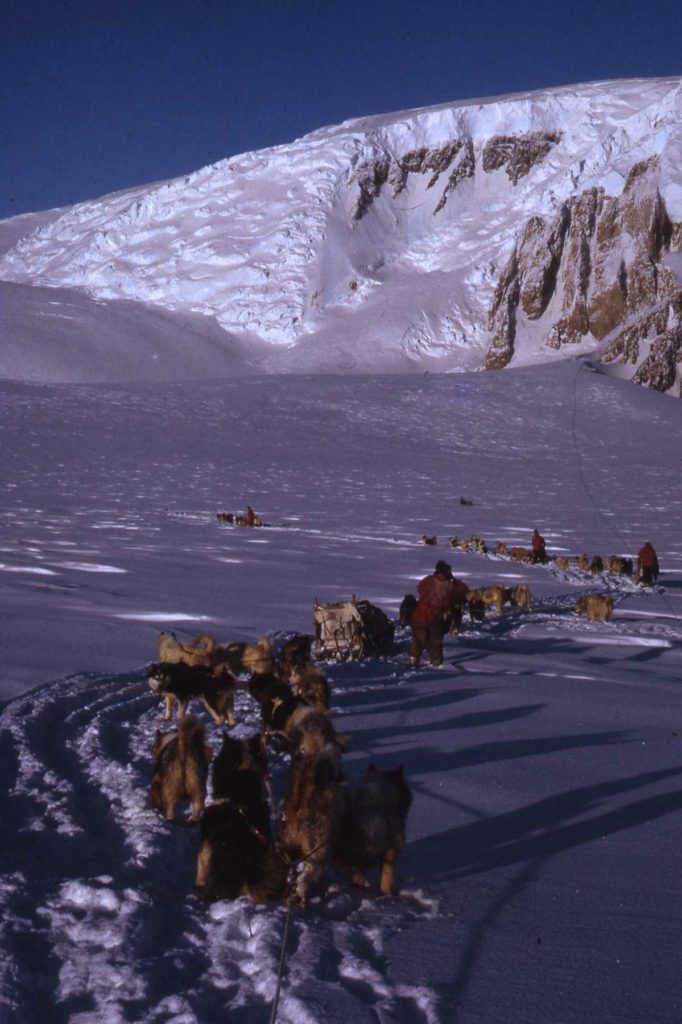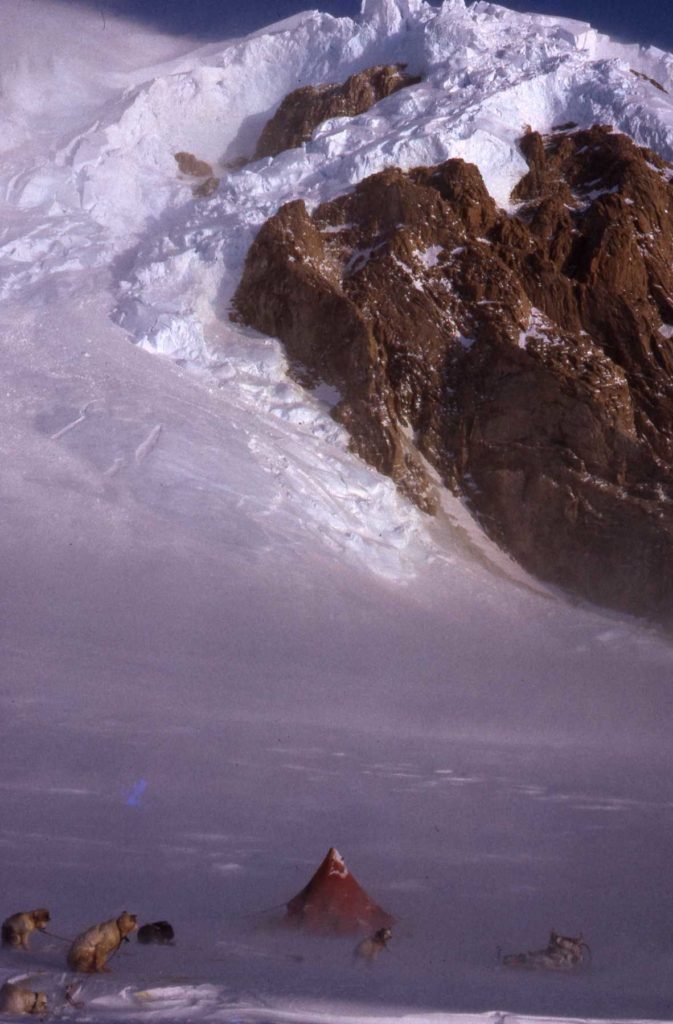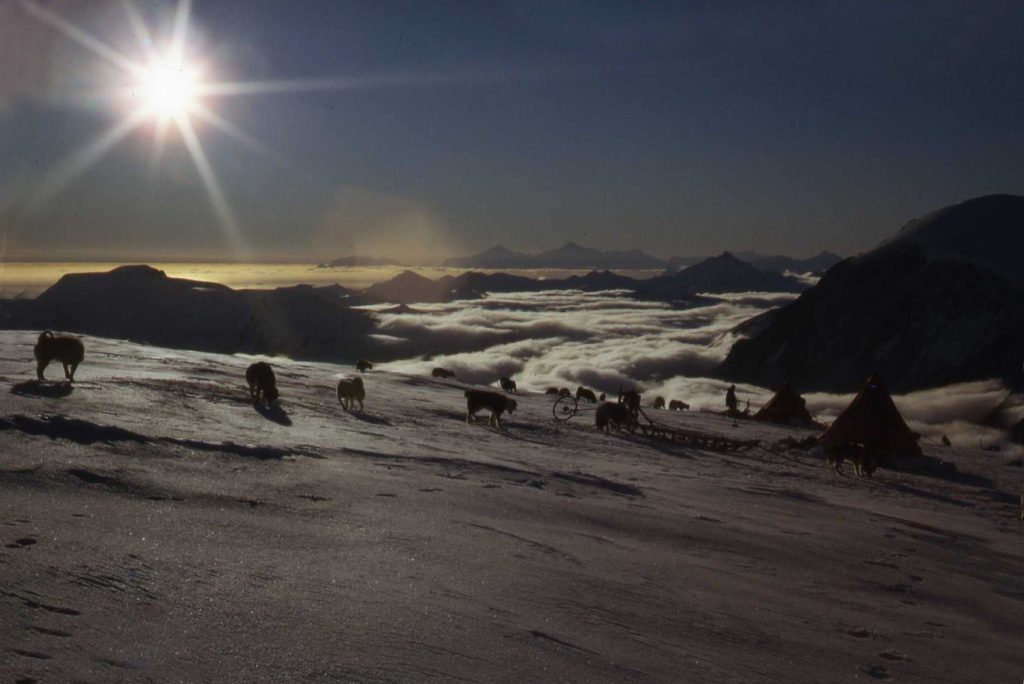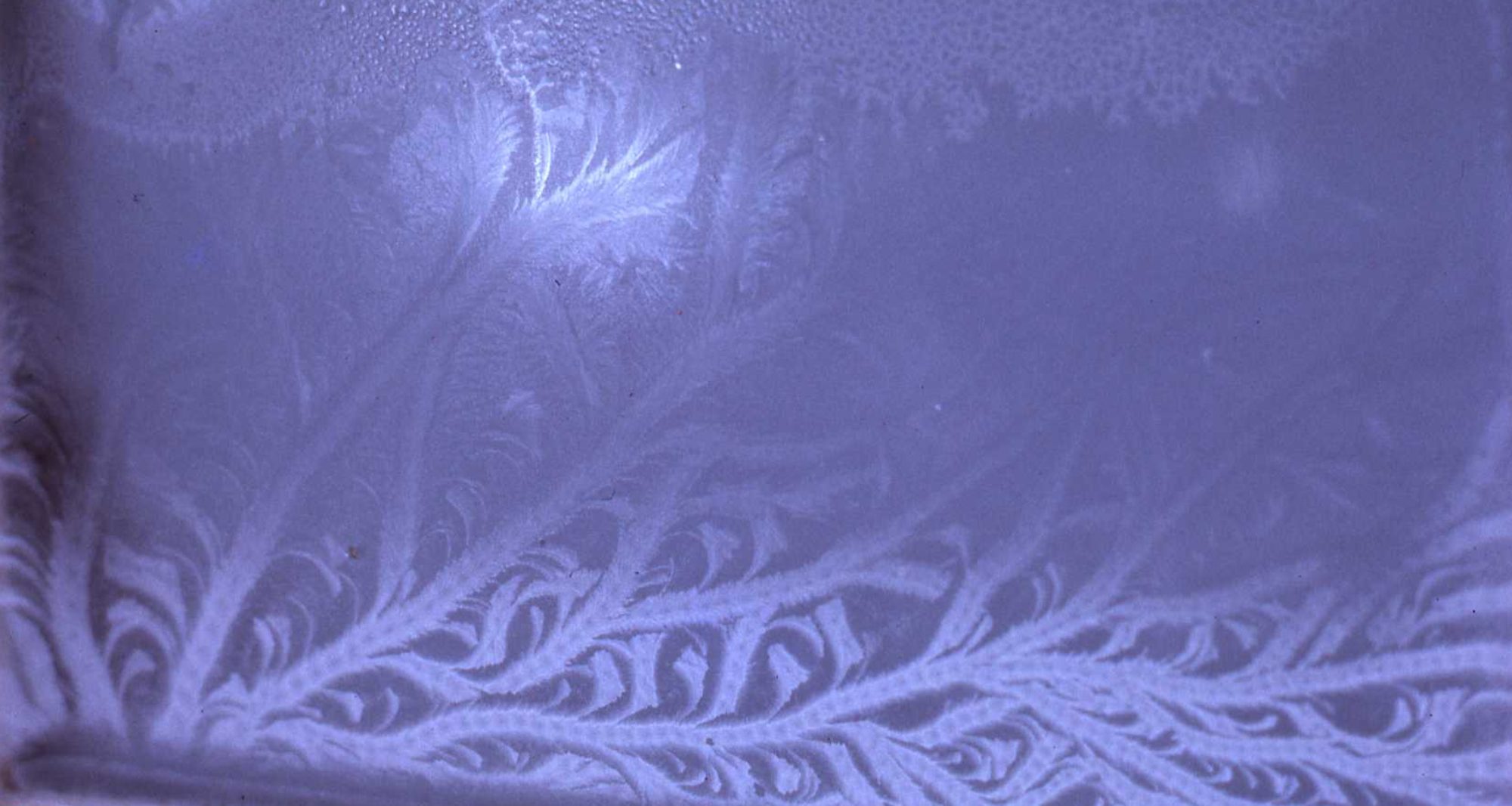The month was August 1972. The plan was to lay food depots up on to the plateau ready for the main summer journeys. During my time at Stonington sledge parties travelled overland to their summer work areas. In the absence of good sea ice along the coast, the route up the Northeast Glacier and the climb up the steep slopes of Sodabread was the only way to get to the main summer work areas south of the base. This story involved a number of sledge parties including my own Sledge Lima:
| Sledge Echo | Miles Mosley, GA, Gaels |
| Graham Wright, GA, Komats | |
| Sledge Charlie | Paul Finigan, GA, Vikings |
| John Hudson, Geologist, Players | |
| Sledge Foxtrot | Neil McNaughton, Geophysicist, Admirals |
| Dennis McConnell, GA, Picts |
The main ones involved in the main drama were:
| Sledge Delta | Brian Hudson, Diesel Mechanic, Skidoo No 1 |
| Ali Thomson, Builder, Skidoo No 2 | |
| Paul Gurling, Surveyor | |
| Sledge Lima | Dave Singleton, Geologist, Ladies |
| Mick Pawley, GA & Base Commander, Debs | |
| Dog Teams | Ladies: Nog, Dusty, Rocky, Maria, Sonsie, Shirl, Nig, Kaytee, May, Dale |
| Debs: Bones, Debbie, Myth, Jorge, Baloo, Mogli, Craig, Darach, Saz |

The first 9 days from the 6th to the 14th August were relatively trouble free and involved all teams ferrying loads via Walton, East Butson Ridge and finally the steep slopes of Sodabread on to the plateau edge via The Amphitheatre.
Progress was only delayed a couple of days due to the weather and the need for a skidoo return to base trip for spares following the breakdown of the other one. Foxtrot (not in the field at that point) was called out from base to act as a guard for the returning skidoo. The limitations of skidoo travel were soon becoming obvious to me. They were unable to pull any loads on the steeper slopes such as the bottom main Sodabread climb to The Amphitheatre and the top Cresta Run slope to the plateau edge. However, they made really good progress on the flatter areas. Having established approximately 5700 pounds of supplies (dog food, man food, paraffin and survey equipment) at the plateau edge, sledges Lima and Delta were left to push some of the depot further to Beehive. Temperatures were on the low side at minus 26 degrees C. Keeping active was the key to being comfortable. Days were very physical and very exhausting with just enough energy left at the end to talk. Surfaces were fairly good although wind formed sastrugi made for an uneven ride and the odd turnover.

On the 10th, having just struggled to get my dogs away from the base of Sodabread for a return trip back to Butson Ridge I was greeted by a brawling Vikings team who had escaped from the driver on Sodabread, smashed their sledge and appeared to be heading home. I had just about run out of pickets trying to separate the dogs when thankfully the skidoos arrived to help. Unfortunately this kind of event was infectious. The following day I was about to lead up the final Cresta Run when the Ladies turned back down the traverse. All would have been fine as I stamped on the brake but unfortunately in doing that I cramponed my Onitsuka boots together and couldn’t stop the sledge. Nor could I move with feet firmly clamped together. Very embarrassing but in a way hilarious! This resulted in a completely smashed handlebar which I had previously cracked anyway due to the intensity of pushing heavy loads up the slopes.
On the 14th August, Sledges Lima and Delta set off for Beehive with the depot supplies (roughly 20 days’ worth of man food, dog food and paraffin).

No 1 skidoo was having trouble with iced and blocked fuel lines causing considerable delay. At one point Mick and I sat waiting in a snow hole for an hour trying to keep warm. Temperatures were still low at minus 34 degrees C. The increase in wind speed over the day was a sign of bad things to come. I dropped off a couple of miles short of Beehive to allow Mick with empty sledge and the skidoos to quickly get to the depot site. The depot was laid that day and both units camped back down the trail. The following day was the start of a period of high winds drifting snow and continued low temperatures. It lasted 4 days with wind speeds of around 50 knots and temperatures at minus 36 degrees C. At one point visibility was down to 3 yards. Any outside activity was extremely difficult. At one point when Mick came back in the tent even his eyelashes were frozen. The skidoo guys decided it wasn’t worth going out and at one point Paul erected a pup tent so he could go to the toilet without getting drifted up. Brian just decided to clamp up and didn’t go to the toilet for days. Mick and I had the dogs’ welfare to consider. Some were drifted up and frozen to the ground and were showing early signs of exposure and frost bite. So, they needed regular attention. Drying clothing was becoming a problem given the diminishing supply of fuel and on the 17th we started rationing paraffin, fearing the worst. Most of the days were spent laid up in the sleeping bags. Hoar frost was starting to form in the roof of the tent and periodically descend on to most items, including our clothing hanging in the roof. Snow drift was even coming in through what we called the donkey’s dongler (the rubber hose allowing ventilation into the roof of the pyramid tent).
On the 19th otherwise known as the day of doom, there was a clearance and a chance to travel. The skidoos had other ideas though. Delta’s clock had stopped so when we called them on the radio they were still snoozing. It was so cold that when I got outside the tent I immediately went back in and doubled the amount of clothing I was wearing. Mick and I soon got everybody up only to find both skidoos refused to go. No 1 had fuel line icing problems again and was full of drift. No 2 had a broken pull start rope which Brian fixed in the tent but then the tracks were frozen and when the machine was put into gear, the drive belt burned out. Brian replaced this but the skidoo still wouldn’t go. This time it was burned out spark plugs, then cracked high tension leads then another broken spark plug at which point having taken up the whole morning, we gave up. The skidoos were loaded onto sledges and the dog teams set off pulling 1500 lbs each on two sledges each. Fortunately snow surfaces were good and weather reasonably clear until we got to Armadillo Hill when the wind and drift got up making it a very unpleasant moonlit camp at 8 pm. I was on inside man duties the first of which was turfing one of my dogs (Dusty) out of the tent. She had sought shelter while I was unharnessing the other dogs; a wise old dog. We decided to leave the primus on tonight so our clothes could dry out. Temperatures outside were still low at minus 38 degrees C.
The following day (20th) we were greeted by more bad weather. This marked the start of another period of lie ups. We had been rationing paraffin since the 17th only using stoves to cook and spending 20 hours in our sleeping bags fully clothed. Wind speeds got up to 60 – 70 knots which together with the very low temperatures made it very uncomfortable. Sleeping bags were all wet and I put on extra clothes to keep warm during the night. That night we asked base to recall sledge Foxtrot to assist us when we reached the base of Sodabread. One of the days Mick showed how resourceful FIDS can be by trying to fashion a spark plug fitting from a pair of Spencer Wells forceps out of the medical kit. It was our last hope for the skidoos but sadly it didn’t work. The dogs were really suffering at that point. Nog and Shirl (Ladies) were frozen to the ground and Darach (Debs) had a frozen rear end. We couldn’t bring them into the tents because we only had enough paraffin to keep ourselves warm.
On the 22nd Mick and I came up with the idea of using the skidoo petrol in the primus stoves. However, we asked base to try it out first. It’s interesting the things you say and do in such situations. We decided that we would light the stove in an empty man food box and if it exploded or caught fire we would just shut the lid and throw it out of the tent. If you know anything about tunnel entrances to pyramid tents, let alone about the properties of petrol, you would know how crazy this idea was. What we did is not to be recommended and ordinarily a massive health and safety risk but desperate times demand extreme measures. It worked anyway and at last we had abundant warmth. We decided that we would travel at first opportunity even if it was at night as the moonlight was with us. Food was also rationed at this point. Meals generally consisted of a big porridge helping plus tea at about dinner time and a thin soupy meal plus biscuits at tea time.

On 23rd we decided to travel with a 7am alarm. Our tent was down and packed while Delta was still in theirs. It was blowing about 30 knots and temperatures were minus 32 degrees C. The dogs were doing well but they were very much under the weather after prolonged rationing, low temperatures and high winds. I led off but found the sastrugi difficult when pulling a tent unit load as well as a skidoo. The dogs were getting confused and so I let Paul go up front to lead them. Eventually I had to ditch my skidoo and Mick also ditched his. We made progress by a combination of relaying them and pushing them separately down the slopes using rope breaks. Paul was constantly bugged by iced up spectacles and eyelashes. I ended up with a frost bitten nose. Mick had gone ahead to make camp. We almost over shot the camp thinking Mick had gone down the Cresta Run.
Having had to abandon my skidoo after a frustrating time on the upper slopes we fortunately spotted the camp and depot before going down any further. This was a very hard day for dogs and men. We were very tired and had lost our pee can. What next! Some of my dogs were bleeding from the mouth and the frozen ones were shivering. By 6pm the wind had increased to 40 – 50 knots. The evening was more comfortable as we changed back to paraffin and started to get the tent contents and clothing dry.
Foxtrot radioed to say they had arrived at the base of Sodabread. That was great news but sadly the weather clamped in again (Minus 28 degrees C and 60 – 70 knots wind) and the 24th was another lie up. Dusty (Ladies) was taken in by Delta after making a racket all morning due to a bleeding nose and frozen lumps on her fur. Kaytee (also Ladies) with frost bitten nose and hind legs was in our tent. On outside man that day the wind speed was such that the dogs couldn’t see their nutty so I had to place it in their mouths. Unfortunately when I returned to the tent I put my hand on my airbed as I climbed through the door. What happened next I couldn’t believe. In the cooking area further inside the tent the increased pressure moved my bed just enough to nudge the leg of the primus which in turn slipped off the board and tipped a can of water all over Mick and his bed. Not what you want when you are trying to keep dry. He wasn’t best pleased!
On 25th August it looked like we were finally going to get home. Craig (Debs) kindly woke us up at 5.30 am. The moon was really bright so we made breakfast and struck camp. Brian, Ali and Paul pushed Skidoo No 1 down the top slope. Mick had pushed No 2 down the previous travel day. Mick and I focused on getting the tent units down to The Amphitheatre where we picked up the skidoos and ferried them to the top of the lower Sodabread slope. Foxtrot met us at this point and helped get No 2 skidoo down while Brian, Paul and Ali handled the other one. After spending a bit of time tidying the depot at Sodabread we all headed back to base with Foxtrot leading. All Lima’s’ dogs were suffering from their battering on the plateau but still managed to get us back by 5pm after a long travel day. What strength they have and what a relief to finally be on base again after 17 days in the field, 8 days of uncomfortable lie ups and 98 miles travelled.
For me, the main dangers with Antarctic travel were crevasses, high winds, and low temperatures. We got 2 out of 3 for a long period of time. Thankfully we had been lucky this year regarding crevasses on the Northeast Glacier and Sodabread. The skidoos added a new dimension to these dangers. I imagine the dogs were glad to see the back of them. Our conclusion was that their reliability was poor and they were useless at pulling loads on steep slopes. However, when working on flatter surfaces they did a good job getting supplies moved approximately four times as fast as dogs. This trip was my first of many ventures I would have on Sodabread and as far as transport is concerned I would choose dogs every time. They offer so much more than a machine and are life savers. Over my two years at Stonington I ventured up Sodabread a number of times in anything from glorious sunshine to absolute white out and driving winds. To me it was like an old friend I grew to know very well, even when I couldn’t see anything beyond my front dog.
Dave Singleton (Geologist)
Stonington Base E 1972 and 1973

